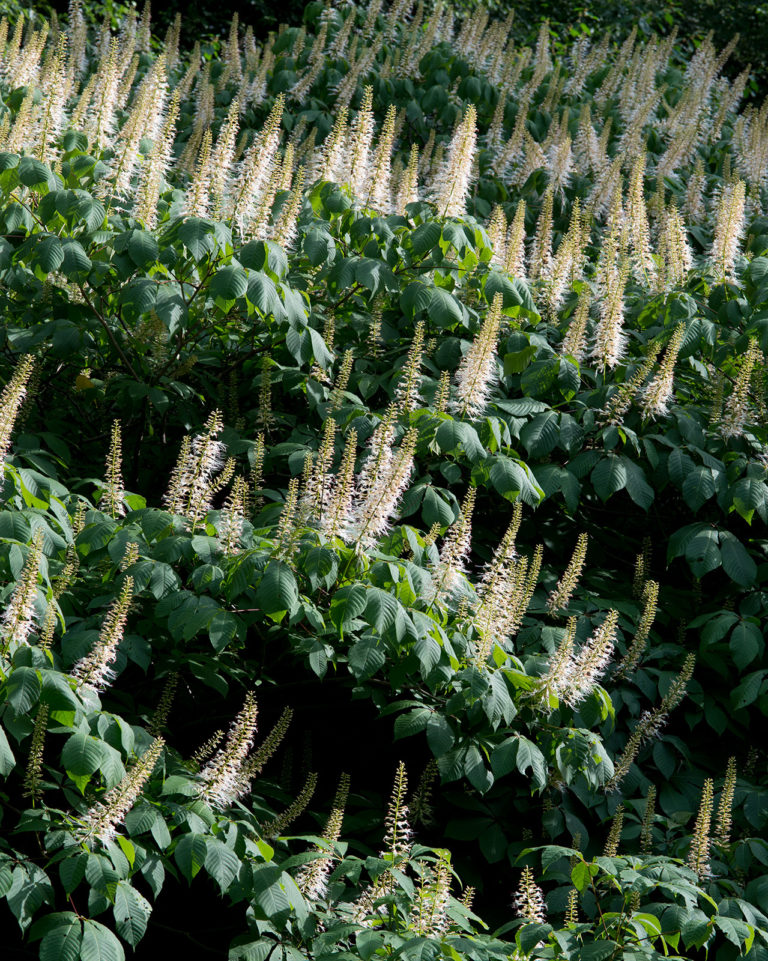Although not actually native to NC (it naturally occurs in mid-Alabama), Bottlebrush Buckeye is a favorite shrub in our area because of its show-stopping, 8-12-inch tall panicles of white, feathery flowers with prominent reddish anthers and pinkish filaments. These attract numerous butterflies and other pollinators in early summer and then are followed by large, bright seed capsules in the Fall. Although Bottlebrush Buckeye may be grown as a single 6- to 12-foot individual in a shady border, to show off its colonial character to full advantage, more space and more light are required. It displays horizontal branching near the ground, resulting in a large mounded shape. The fall foliage of Bottlebrush is bright gold, and the leaves persist on the plant well into fall, unlike the Red Buckeye and the Painted Buckeye. Like all Buckeyes, Bottlebrush Buckeye is deer resistant.
NURSERY HOURS
Wednesday: 10-4 Thursday: 10-6 Friday-Saturday: 10-4 Sunday: 12-4
Aesculus parviflora

Key Info
Scientific Name: Aesculus parviflora Walter
Common Names: Bottlebrush Buckeye, Dwarf Horse Chestnut
Family Names: Sapindaceae (Soapberry Family)
Plant Type: Tree / Shrub
Leaf Retention: Deciduous
Bloom Times: Jul
Flower Color: White
Additional Info
Habit: A suckering, multi-stemmed, thicket-forming shrub presenting upright flowers.
Height: 8-12'
Spread: 8-15'
Soil Conditions: Average.
Leaves: Opposite, palmately compound leaves with 5-7 leaflets, oval shaped with toothed margins, yellow fall color.
Flowers (or reproductive structures: Showy; erect, 8-12" panicles of white, tubular flowers w/ prominent red anthers and pink filaments.
Fruit: light brown, thin walled 1-3" dehiscent capsule w/ 1-3 shiny inedible nuts inside called buckeyes, maturing in late summer to early fall
Natural Distribution: Bottom lands, open woods, ravines
USDA Hardiness Zone: 4 to 8
USDA Wetland Indicator Status in NC: FAC
Pollination: Bees, butterflies, other insects
Wildlife Connections: The tall flowers attract butterflies and hummingbirds.
Propagation: By seed.
